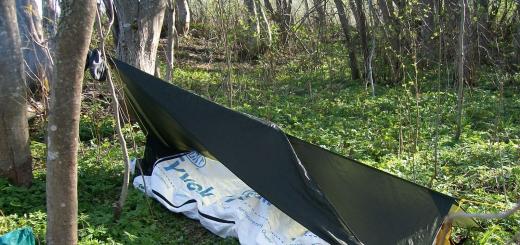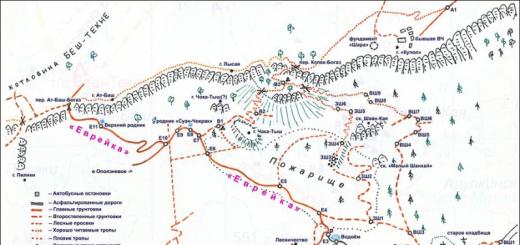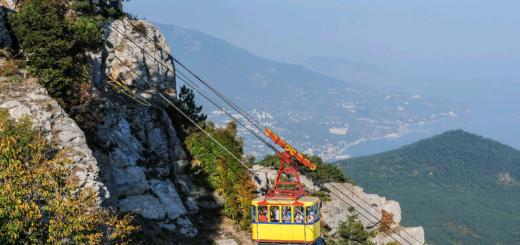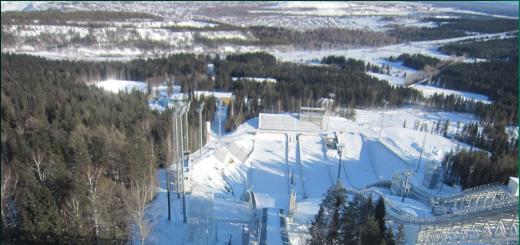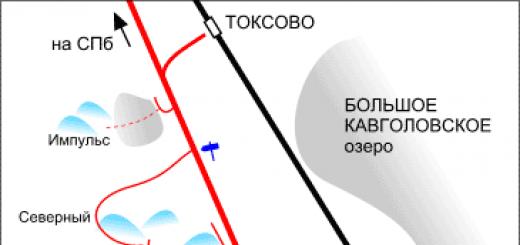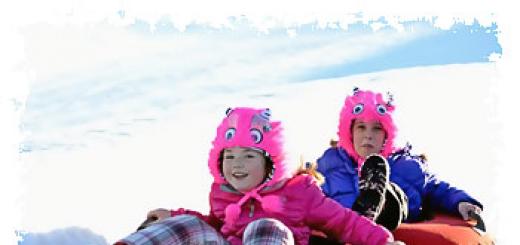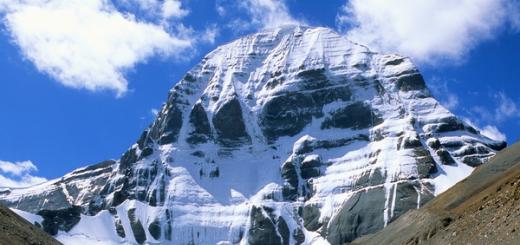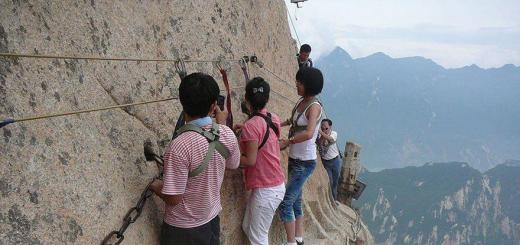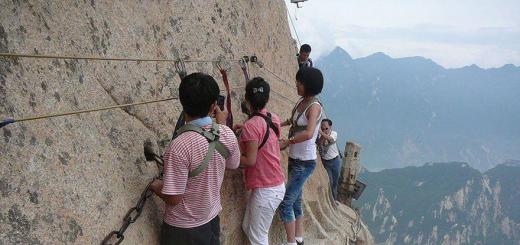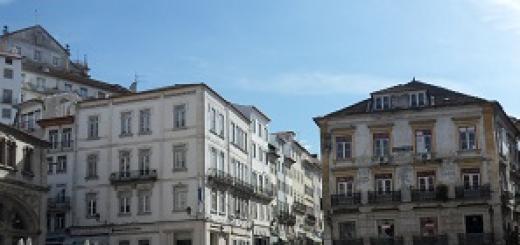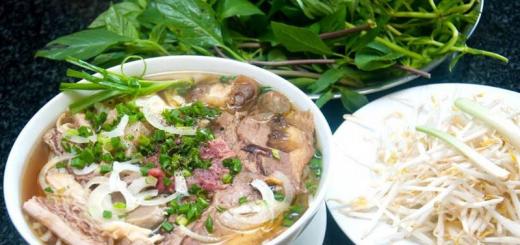Marangu route 5 days 1766 $
Marangu route 6 days 2009 $
Lemasho route 6 days 2109 $
Lemasho route 7 days 2329 $
Machame route 6 days 2033 $
Machame route 7 days 2253 $
Rongai route 6 days 2105 $
* the price is indicated for groups of 3 people or more - for one, two or more people specify the cost - there are discounts.
The cost of the ascent includes:
- meeting at Kilimanjaro International Airport;
- transfer to the hotel in Moshi;
- accommodation at the hotel before the ascent (breakfast included, accommodation in double rooms) *;
- transfer to the starting point of the ascent;
- professional support team. All guides have certificates "Wilderness First Responder", "Wilderness First Aid", climbing experience over 7 years. For each of the participants in the ascent, one porter is provided (can carry up to 15 kg);
- permission to visit Kilimanjaro National Park during the ascent;
- Kilimanjaro National Park Rescue Services;
- ecological fee of the National Park;
- three meals a day. The menu includes various soups, side dishes, several types of meat and fish, fresh fruits and vegetables, vegetarian options are available at the request of customers;
- modern tents The North Face VE-25 (on all routes except Marangu). On Marangu accommodation in cabins **;
- warm and comfortable mattresses;
- oxygen systems and oximeters;
- first aid kit;
- group equipment (food tent, table, chairs, dishes and cutlery);
- meeting the group at the exit from the National Park and transfer to the hotel;
- accommodation in a hotel in Moshi after the ascent (breakfast included, accommodation in double rooms);
- international climbing certificates;
- return transfer to Kilimanjaro airport.
* The initial cost of the tour assumes double occupancy. If only single accommodation is suitable for you, you must contact the manager at least 2 weeks before the start date of the tour.
** During the ascent, 2-3 local accommodation in tents is provided, depending on the number of participants. If you need an individual tent - inform the manager about it. Single occupancy is not possible in the cottages on Marangu.
The price does not include:
- international flight to Tanzania (Kilimanjaro airport);
- Visa fees;
- lunch and dinner at the hotel (before and after the ascent);
- rental of personal equipment;
- tip to the escort team $ 200-250 per person at the end of the ascent;
- mountaineering insurance (ask the manager or arrange it yourself
Yesterday I was visited by a certain Dima, who usually prefers to hide behind the party nickname Skiv. He just returned from a month-long trip to Kenya-Tanzania, the highlight of which was the ascent of Keely without any financial expense.
Let me explain it for the uninitiated. Kilimanjaro, along with nat. Serengeti and Ngorongoro parks are perhaps the main source of income for Tanzania. To climb the highest point in Africa, you need to pay at least $ 700. This includes a fee for staying in the park itself, payment of a MANDATORY guide, a MANDATORY assistant guide, porters, water, food and all the leaves.
Without guides and corresponding papers to the territory of the nat. Kilimanjaro Park won't let you in. And if they find it on the mountain itself, they will be arrested. This happened, for example, in 2000 with WUA-shniks, who were caught already on the descent and imprisoned (however, the consulate pulled them out).
But Dima is a desperate person, as I became convinced in 2004, when the two of us swept 60 km in 2 days through the jungles of Malaysia, inspecting the nesting of bats, trying to catch up with the king cobra and manually removing poisonous spiders from the camp site. ..In short, he climbed Keely himself.
It took him three days to go around Kili (usually everyone climbs on it from the southern slope, starting from the town of Moshi) on local tarantasses, get acquainted with the life of local tribes and get close to the mountain (of course, he told everyone that he was going " take pictures of the forest ").
It turned out that no one was guarding the mountain from the northern slope. MORE THAN - there are five kilometers to the border with Kenya, where there are no border guards either. Considering that neither Kenya nor Tanzania ever checks passports (only when arrested :)) - this is a way to save money if you just want to go back and forth from Kenya.
Hiding his backpack in the forest, Dima began his ascent. He was equipped, frankly, so-so. To lighten the weight, he did not have a tent, especially warm clothes. Food - to a minimum (ate - once a day), water - 1 bottle !!!
He didn't have a map either - just a compass and a lot of enthusiasm.
It took five days. Of which I spent two nights in the forest, two - in the savannah (in terms of altitude, I think everyone knows) and one - directly at the top.
He slept on the ground, spreading a raincoat under the sleeping bag (he did not take foam). There are no mosquitoes on Keely, no ants disturbed.
The water quickly ran out - he drank the water that he found. That is, for the most part, from animal watering places, he says, he poured water from mug into mug for a long time, filtering all small animals (this is not for you to drink tap water in India :)). Closer to the top - I was drowning water from glaciers - I was slightly poisoned, tk. it turned out to be saturated with sulfur.
I followed the compass, in the forest I was guided by the stream bed. In the thicket of the forest and the wilds of light forests, I tried to look for elephant trails - it's easier to follow them.
The easy miner started at over 5, but he prevailed.
I got to the top in the second half of the day - in this season, fog hangs from midday, so no one is guaranteed at the top. I also spent the night there. At the sleepover, my toes were slightly frostbitten - there were only boots and woolen socks on top of the usual ones. Other warm equipment - -15 thermal underwear and a light snowboarder's jacket.
I went down for two days, but the fog deviated greatly from the course and left at all not where I spent the night. Two more days then wandered around the savannah - looking for a backpack.
There were many footprints in the savannah, incl. and predators. I saw the remnants of their feasts, but I didn’t come across them themselves (otherwise I wouldn’t be sitting in my kitchen), only once I scared the elephant.
The turning point came when Dimka loosened up exhausted somewhere in the middle of the savannah and saw how a vulture sat down on a stone next to him and looked expectantly at the man. I had to pull myself together and get up ...
Finding, in the end, a backpack, Dimka returned to the same village from where he began his ascent. He was not there for 9 days.
Now all that remains is to kick Comrade Skiva so that he writes a detailed story about his ascent and other adventures in East Africa. Finally, he also printed his own films - more than 40 pieces. But he has a professional DSLR with a pair of interchangeable lenses.
P.S. And a couple more useful facts about Kenya, Tanzania.
Visa to Kenya - at the airport. 20 - weekly transit, 50 - month. According to Dimka's assurances, it is necessary to take ONLY transit, because at the exit the border guards do not look at the visa at all.
Visa to Tanzania - $ 50 - a cartoon for 3 months, so you can easily travel around all sorts of neighboring Burundi-Rwanda-Uganda ..
Safari - the tour costs an average of $ 70 per day (more is possible). He took a seven-day safari - three days in Kenya (Masai Mara and a couple of other parks) and four in Tanzania (Serengeti, Ngorongoro). It all cost $ 500.
P.P.S. He also showed a bunch of photos from the trip to the UEFA Cup final - Lisbon is still an amazing city ...
6
Of course, everyone's motivation is different: someone just goes to the mountains and for him this is a logical development of his hobby, someone got tired of having an all-inclusive vacation and decided to test himself for strength, and someone, in particular, I, read a lot fairy tales and got it into my head that he should stand on the top of the black continent among the eternal snows of Kilimanjaro, and follow his dream. 
Keely at first glance may seem like a "kindergarten". Cats are not needed, insurance is not needed, there are no avalanches - yes, this is a pleasure walk in the mountains - lightness. You thought so - you have already lost. Keely is very cunning. Classic route to the top Uhuru peak Kibo volcano (5895 m) takes 5 days. In other words, in 5 days you will gain almost 6,000 meters. For comparison, the summer ascent of Elbrus, although it is irrespectively more difficult in terms of weather conditions and in technical terms, takes 6 days (in good weather and the first approach), despite the fact that the summit of Europe is 5642 meters, which is 253 meters below. Believe me, in the mountains, these 250 meters are very significant. What does it mean? - you have 24-48 hours less to acclimatize to the altitude on Keely. Why this is so important, I will tell you a little below, when the group reaches 3700 m.
So, here's a daily itinerary. Below there will be a description of each with all its difficulties, specific points.
DAY 2: Mandara Hut 2720 m - Horombo Hut 3720 m (evelation 1000 m)
DAY 3: Horombo Hut 3720 m - Zebra Rocks 4120 m ↓ Horombo Hut 3720 m (↓ 400 m - 0 elevation)
DAY 4: Horombo Hut 3720 m - Kibo Hut 4720 m (evelation 1000 m)
DAY 5: Kibo Hut 4720 m - Gilman’s Point 5681 m - Uhuru Peak 5895 m ⊕ (elevation 1175 m) - ↓ Gilman’s Point 5681 m - ↓ Kibo Hut 4720 - ↓ Horombo Hut 3720 m
DAY 6: Horombo Hut 3720 m ↓ - Mandara Hut 2720 m ↓ - Marangu Gate 1879 ⊕
The first day.
⊕ Marangu Gate 1879 m - Mandara Hut 2720 m (elvation 841 m +)
At around 6:00 am, you wake up at your cozy hotel where you are staying after arriving at Kilimanjaro Airport. Usually it is in the cities of Moshi or Arusha. Early breakfast, packing of backpacks, departure to the gate.

(photo via eBay)
I strongly recommend that you take several sealed plastic bags from home and pack in them all the documents that will be in your hands: a passport, a certificate of vaccination against yellow fever, a driver's license, tickets ... and carry it with you in an assault backpack in the most inaccessible pocket ( usually this is located on the top of the back wall), the second is perfect for a phone.

Here the first nuance already arises. As you remember from the previous article about equipment, you have 2 backpacks: main and assault (you carry it).
Separate your belongings right away, even before boarding the bus. Think about what will come in handy on the first day. Your assault backpack travels with you, and your main backpack travels on the roof of the bus. When you arrive at the place - at the start of the trek - the porters will take their backpacks off the roof and literally run upstairs with them - to the next camp.

The opinion that the porter walks alongside at your pace and that any thing is in the free, constant access is one of the most serious misconceptions. If you haven't moved your raincoat, then alas, you will get wet, if you forgot a snack, sunscreen ... whatever, you can get it only at the end of the day at the next camp after 6-8 hours of walking.
On the first day, I was wearing a T-shirt, trekking pants, sports sandals, a baseball cap. In a backpack, trekking poles, water 1 liter, a snack, a first aid kit (plaster, atoxil, iodine pencil, pills for the head and stomach, etastic bandage), glasses, a raincoat, a pair of socks in case of a leg injury to isolate it from dirt or just if rub your sandals. Personally, I additionally carry a small bag on my belt. I throw a camera down, a phone, headphones, hygienic lipstick, napkins and something to chew on.
7

We left at about 2:00 pm from Marangu Gate. I want to draw your attention to the fact that the bus brings you to an altitude of 1879 meters in a matter of hours, so you need to understand that the climb on the first day is much more than 841 meters. At this altitude, no unpleasant sensations arise, but this certainly has an effect on the general acclimatization of the body in the following days.
The first day is a continuous jungle. In general, I must say that the landscapes are absolutely breathtaking along the entire route. Everything is very picturesque: the red earth - just crimson - is a feature of these places. Lianas, ficuses ... an endless number of outlandish plants, everything blooms, the aroma of the decay and dampness of the impenetrable forest. Mountain streams, waterfalls rustle around, birds sing ...

Then it started to rain. Warm enough and small, but considering that going far, it is better to get dressed right away. The raincoat floats, so at this height and at this temperature (low and warm), I roll up my sleeves and roll up my trousers to hide everything under the raincoat. It looks incredible funny: a group of people-covers.
The track on the first day is simple and short. It seems so now that you know the whole route. Objectively: it is certainly not complicated, but torn. There is a minimum rise all the time, there are no flat areas, periodically you need to climb a cascade of stones, like a staircase, in which all the steps are of different sizes. I especially did not like this segment on the descent. If you do not prepare in advance, then on the first day you can be pretty exhausted from habit. We left late so we ended the day at dusk.
2

Mandara Hut 2720 m what is the camp? - Tiny houses for 4 people are double-sided. Speak carefully - you can hear everything behind the wall. They have a semblance of a bunk bed - three on the first floor (actually on the floor) with the letter "p", the fourth on the second. Separate toilet for boys and girls and showers. There is no hot water or electricity - that would be too much. In the evening we actively use a flashlight - a night in the mountains is not a night in the city - here it finally becomes clear what is black and black and how the stars actually burn ... In the center of the meadow there is a reception, where everyone who comes to the camp must sign and the dining room.
The food is rather monotonous, but nutritious and in some respects even tasty: in the morning porridge, scrambled eggs, toast, pancakes with jam and sausages; for dinner: bumpy soup, rice with chicken or vegetables, pancakes, fruits; tea, coffee, cocoa.
In the dining room, you can sit as long as you like, watch a movie from a laptop, drink tea, play board games - whoever is good at what. But basically, everyone just gets to know each other and shares their impressions and stories about someone who hurts. I remember that already here some of them had the first signs of malaise - altitude sickness: dizziness, nausea, drowsiness and lack of appetite. Fortunately, by morning, most of us acclimatized and happily stepped forward, more precisely forward and upward.
Second day.
Mandara Hut 2720 m - Horombo Hut 3720 m (evelation 1000 m)
We got up early and were very happy about the weather. The sun was shining, and we even sunbathed, sitting on the steps of the terrace during breakfast. It was already cool for the sandals, and I decided to change into boots (if these are your first or just new boots, wear them at home in a week, just walking around the city).
6

I am wearing a T-shirt, trekking trousers, trekking boots, light trekking socks (socks must protrude above the boots, otherwise the upper edge of the boots will rub your foot badly), a baseball cap, glasses, a wind jacket (membrane jacket against rain and wind), and sticks in my hands. In the backpack there is a fleece, 1 liter of tea, a snack, a first-aid kit, a raincoat, a lunchbox.
We christened this day Tin Day. Of course, it cannot be compared to the "great" sensations of the night of the assault, but we enjoyed the sea: the sea, because we were not ready - it was a real mountain "surprise", and the sea, because I probably never felt so wet! An hour after leaving the camp, it began to drizzle, visibility dropped sharply and we halted to change. At first it was even funny - it was not fog - the group seemed to go into the clouds, and I fantasized that we were walking across the sky. But the clouds at this height are mostly rain, and if there are any, it will most likely rain.
And it started raining. We were rising, the sun's rays did not break through the clouds at all, the gusts of wind became sharper, the rain intensified, and the temperature dropped. Very soon the roads turned into mountain rivers and we were already walking, feeling for a smaller place with a stick. Do I have to say that such conditions greatly impeded all of us? And I regretted when I asked our leading African guide how much more to go. To hear in response “at this rate of 6-7 hours” was simply deadly ... 
We continued to walk ... The face got wet first - it just flowed down - and our hands ... gradually the water rolling down the raincoat wetted the trousers below the knee and began to flow into the sleeves from the brushes ... All this could still be tolerated ... From the trousers the water passed to the boots, but they still held on, but the socks - alas, no. And slowly but surely the socks absorbed water, gradually bringing it into the middle ... In 15 minutes of rain the water completely seeped into the shoes. It was 5 hours before the camp. "Squelch-squish ... squelch-squish" - each step set the water in the shoes in motion, and at some point I saw that the water had completely wetted the shoes and began to pour out a little bit ... When the rain became thinner, we stopped , I poured the water out of my shoes, twisted the socks and insoles, admired the blue-white color of the skin wrinkled from the water and kept on walking. In fact, this was the only serious mistake: I had waterproof membrane pants - in the main backpack ...
The group stretched out a lot. The guys were simply exhausted from the loss of energy, cold, everyone really wanted to eat, but it was impossible to stop and dine in the rain. Mountain sickness began to attack many: shortness of breath, vomiting, severe dizziness and a heart trying to jump out of the chest. I was just very wet. I saved myself with chocolate bars and still warm tea, and with all my strength I continued to struggle uphill - sooner, sooner into the warmth, under the roof, to dry things and hot soup.
We entered the Horombo Hut 3720 m camp first.

Horombo Hut 3720 m is actually a base and acclimatization camp. This is where the most important adaptation to height takes place. We will spend two nights here: today and tomorrow after the radial acclimatization hike to the Zebra Rocks 400 meters up and one more night on the way back after the summit. But about everything in order.
When we finally found ourselves in the shelter and the porters brought us our things, there was a second shock: our backpacks, like us, were completely wet along with all the contents. Some even had their sleeping bags wet. We joked with all our might and tried to cheer each other up, but to be honest, there was no understanding of what to do now. So the challenge: You are completely wet. You have a backpack of removable items, but it is also completely wet. Indoors + 10-15C. Heating, electricity, fire and hot water are not available. It continues to rain outside. The room is so humid that things not only do not dry, but dry ones also gain moisture. In a day, you will go to the subzero temperature zone, where wet things are death. Question: What to do and how to dry things?
Everyone was lucky in different ways. My sleeping bag was in a sealed bag and remained untouched by moisture, thanks to which all the things under it remained practically dry: sneakers, thermal underwear and socks. And also the things that I carried myself in the assault backpack (including the fleece) remained dry. But the problem still remained: I had a partially wet down jacket and completely wet boots. I sincerely hope that my story will give you the opportunity to avoid such a situation, but if it did happen, I will try to tell you what is really worth doing, what will help and what will not.
2

EXACTLY HELP:
- Put on everything dry on you. Keep warm. Eat. Recover your strength.
- Hang wet things so that they drip off: raincoat, wind jacket, trousers.
- Determine what you need the most from what is wet. These things need to be unscrewed, blotted with a towel, shaken out well, etc.
- Put these things on yourself, one wet at a time. Top with a dry warm thing and walk - sit - sleep in it until it is completely dry. Try the operation again.
- Turn the shoes over and place them at an angle so that the heel is at the bottom (if you put it on the toe, then the water will have nowhere to go), pull out and unscrew the laces, insoles.
- You need to put a newspaper, toilet paper, dry T-shirt, towel (something needs to be sacrificed) into your shoes to tighten the moisture.
- If you pour boiling water into a flask or bottle, you can put it in a boot - it works.
- I dried my shoes for several hours with newspapers, toilet paper and hot bottles, then I put the shoes on myself, put a chemical heating pad in my sock (to warm my feet, not dry my shoes) and just walked in them. The result: absolute superiority in shoe drying.
EXACTLY WILL NOT HELP:
- If you have chemical heating pads and put them in a wet boot, then you will be wasting them - this is proven and it does not work.
- If you hang things indoors / on the veranda / in the dining room on a bench and hope.
- If you give things or shoes to the porters, thinking that they will dry them "on their own battery", "on their oven", "in the washing machine" ... they have none of this, including firewood - they cook food on a gas burner ...
In the morning we were lucky and for an hour the sun came out, which completed our work. Thus, in a day I dried my puff, my friend's puff, 2 T-shirts, socks and boots.
Dawn 3720 m  3720 m
3720 m
It was different in this camp. Firstly, it is incredibly beautiful here, although we could only enjoy the views and see Keely for the first time the next morning. I remember how I woke up at about 5:00 in the morning and on the machine with a toothbrush and a towel wandered to the toilet, and then I realized that I had been standing in a daze for 40 minutes, enjoying the landscape, and I was glad that I saw it first, because everyone was still sleeping. Secondly, the camp is much larger than the first one and there are really a lot of people here. Thirdly, it is already quite cold here - at night it can easily be about + 0C, and the water in the sink is caught by a light crust. Here, as elsewhere, there are separate toilets, showers with ice water (very clean and decent), light lighting in the houses and the dining room on solar panels, lack of electricity, hot water and communications (it is in one place - on a stone on the edge break, if someone needs it - I'll tell you which one). We all (16 people) slept in the same room - under the roof above the dining room. I remember when we first entered, mountain mice were running on the floor in the dining room, somewhat similar in color to chipmunks. Then we saw them again already in our room and squealed as expected. We were warned that mice can easily get into a backpack by making a hole in it if they smell food. Some time passed and already lying at night in a sleeping bag in half-wet clothes, I saw a couple of mice in the moonlight and thought: “There the mouse ran. She's probably warm. If only she would run into my sleeping bag, warm her legs, ”- this is how the reassessment of values took place.
Day three.

Horombo Hut 3720 m - Zebra Rocks 4120 m ↓ Horombo Hut 3720 m (↓ 400 m - 0 elevation)
During the night, a lot became clear: it was not a pleasure walk in the mountains. The guys were getting really bad. There were those whose pulse rate in a dream reached 150 beats per minute, and the oxygen level fell to 50-55%. Today we do not go higher, we ascend 400 meters and again descend to the camp. We sleep, eat, rest.
By the time we left, the weather had started to deteriorate again. I left all the most important things, dried with such difficulty in the shelter and went to the Zebra cliffs light. The backpack contains only tea, a chocolate bar and a raincoat. And that was perfectly wise. After 30 minutes it started to rain and yesterday's story repeated itself. We put on our raincoats, quickly reached our goal and hid under the rocks. It was a pleasant way out, because the rocks were amazingly scenic and the path was unusually short - we had fun, joked and even wanted to come out here a second time in the evening if the rain stopped.
Of course, no one went anywhere in the evening. The coming two days promised to be very difficult and we decided to build up our strength. I made myself some tea and went to admire the scenery. Immediately I met guys from other groups: someone else was just going up the mountain and was waiting for acclimatization, someone, on the contrary, went down from the top and told exciting stories about how ... We were not lucky with the weather in general, it rains in this the season usually does not and should not be. A stronger cyclone came for the rain, and Kili had already been shrouded in clouds for that day, the temperature had dropped below the set, a strong wind was blowing and a blizzard was blowing upstairs ... ready for this.
5

When it got dark we gathered in the dining room for evening cocoa. And then thundered ... A thunderstorm gathered over Africa. Have you ever seen thunderclouds from a height of four thousand meters?
Day four.

Horombo Hut 3720 m - Kibo Hut 4720 m (evelation 1000 m)
The most difficult day of the campaign began. When you read the climbing schedule without having similar experience in the past, you don't quite understand that day 4 and day 5 are actually one long day. Today we left at 8:00, by lunchtime - closer to 15:00 we will be in the assault camp Kibo Hut 4720 m. After lunch, we will take a short walk, have tea overlooking the magnificent Mavenzi Peak and go to bed at about 19:00. And at 23:30 we rise to start the assault on the summit at 00:00. By dawn - at about 9:00 we will reach Gilman Peak, in another 3 hours closer to 12:00 - Uhuru Peak - the top of Africa. And then the descent, but not to the assault camp, but to the acclimatization camp - at 3720 m in Horombo Hut.
And now in order. We set out early in the morning to the assault camp. Honestly, this is the longest, but the most beautiful and gentle transition. Those who adapt easily will enjoy all 6-7 hours of the track. 3700-4700 m - these are already serious numbers and even the most insignificant symptoms should not be underestimated here. Basically, the guys suffered from mountain sickness, which takes all their strength: the body does not absorb oxygen well, which means the heart suffers - it beats 2 times faster to saturate the cells with oxygen, the muscles of the whole body suffer and do not allow you to reveal all your physical capabilities. Often headaches, nausea.

Professionals say that in fact it is impossible to prepare in advance for the mountains. Mountain sickness is a very individual thing. You can be an athlete with well developed lungs and just sit at 5000 m, requiring an evacuation. But this does not mean that there is no need to prepare, preparation is definitely needed. If you start in a month and a half and walk and run 3-5 km every day, it will help a lot. Swimming develops the lungs well. In addition, I completely gave up cigarettes (yes, alas, I smoke) for a month and a half and from alcohol for a month.
To go to the assault camp, we all got a good warmth. I am wearing thermal underwear, fleece, buff, storm membrane jacket, trekking boots (already 95% dry) light socks, storm membrane trousers, hat, glasses. In the hands - sticks. In a backpack: gloves, a puff, a thermos, a first aid kit, sunscreen 50+, hygienic lipstick, a snack, lunchbox, camera.
7

The landscapes in these places are completely unearthly and what struck me was that there were no sounds at all - only the wind sometimes rustles with my jacket. Mars. At least that's how I imagined him after the movie "The Martian". We rounded Mawenzi Peak and headed for the camp. Mountains are an insidious thing. Do you think the camp is close? - keep walking, you don't need to know that it is still 4 hours away. Believe me, this is superfluous information. It was the best day for me. Everything went according to plan. This is the same trekking in its purest form, as it should be: there is an ascent, but there is also a flat walk, stunning views, good company, interesting conversation, perfect weather.
4

4

Kibo Hut 4720 m - Gilman’s Point 5681 m - Uhuru Peak 5895 m ⊕ (elevation 1175 m) - ↓ Gilman’s Point 5681 m - ↓ Kibo Hut 4720 - ↓ Horombo Hut 3720 m
Everyone got up quickly. It seems to me that the majority did not sleep a wink. We got a light breakfast. I didn't want to eat, so I just poured into myself a few glasses of sweet tea with Snickers and took another thermos with me.
Put on everything. If you accidentally took more than you need, put this on too. We all agreed that a comfortable minimum is: thermal underwear, warm fleece, a buff, or better a balaclava, a puff with a hood, a membrane storm jacket and trousers, gloves, warmers, a hat, glasses, two pairs of socks, insoles between them, boots.

Sticks in his hands, a flashlight on his forehead. In a backpack, only the minimum! First aid kit, tea (the water will freeze), additional heating pads, raincoat, snack, camera. Theoretically, you can put on an additional down vest, and fleece pants under the trousers.
The exit to the assault is always at night. Local guides say that this is so that you don't see where to go. “Any normal person will refuse, and even us,” the guys say. "Disma, how many times have you been to the top?" - "O! I stopped counting after the hundredth. " And this is partly true. I think more than half at the sight of this tilt at 45 °, and closer to the final 60 °, they would have turned down. But in fact, such an early exit on all mountains from Keely to Everest. You need not only to have time to go to the top, but also to descend. And the descent is just the most dangerous part of the path. Not the most difficult, but the most dangerous. You are tired, your legs do not go, you are delighted with the summit and lost your vigilance, the damned gravity pulls you down and you will not notice how in one second your foot will slide off the ledge or you will be carried along a gravel path into a cliff.
We walked by traverse. Like donkeys walk in a row in the mountains. A turn, another turn. It was getting colder. I tried to think about breathing and keep pace, but the guys got sick and we stopped again and again. I remember how a girl from our group just passed out and fell asleep on the rocks. At this time, we have already entered the zone of subzero temperatures. It’s warm while you’re walking. Stopping even for 3 minutes results in complete cooling. organism. Everything has to be restarted. If there is an opportunity to go - do not stop, go. About 5300 m, I also felt the symptoms of the ill-fated miner. I started to feel sick. It felt like the internal organs would just crawl out. But, looking at my comrades walking next to me, I realized that my nausea was just baby talk. One had black circles, either from pulmonary or heart failure, ceased to be circles under the eyes and occupied the area of the entire face, the other simply flew out of the chest and beat under 200 even during stops ... I continued to feel nauseous. “Disma, I'm terribly sick, what should I do?” I asked the guide. "Be sick? Is that all? "-" Yes ... ". "So pluck it out!" - "Disma, but I didn't eat anything for breakfast!" - "Well, eat it !!!", - he said firmly and went to cheer up the guys who were really bad.
I want to give one useful advice to those who decide to go to the top of Keely. If you go this route - Marangu Route - you will storm Uhuru Peak from the same camp as us. BUT, and this is important. Raising your head up you will see Gilmans Point, to Uhuru Peak another 200 meters (vertically), and this is a 2-3 hour walk. This is damn important and nobody talks about it! Know this, save your strength and move on. Remember this all along the way.
Dawn over Mawenzi Peak 
Left - Kenya, right - Tanzania
Probably the story of what each of us has experienced, climbing to the top may take a separate small book, but I would not want to reveal all the cards to the reader. Did I want to turn around? Did I cry? Did I feel sorry for myself? Yes. Yes. Yes. But let it be a surprise for everyone. When we went downstairs, Vitya, a great guy whom we met in the mountains and became very friendly, asked me what was the coolest moment in the trip. And I remembered. We stood 20 meters before Gilman's Point. We walked in the first group and began to take a breath and enjoy the dawn. Then our guide Disma invited us to take a picture. “Guys, get closer, what about you? Rejoice! ”He said. But nobody could. I remember this moment. It was very bad for everyone. And me. And then I thought, “Well, no! Nifiga! Victory! ”- and raised her hand up. It was the coolest moment. The strongest and most real.

A few days later, when I came to my senses, I wrote a post on Facebook about that moment. I won't say it better. And so I'll just quote:
"Why are you doing this?
- Over the past few days, I have heard this question every now and then. It follows right after my story about how it was, there on the way to the top of Kilimanjaro.
It was incredibly beautiful, amazing ... unforgettable ... and just as hard.
If I knew in advance ... if it were possible to convey all the pain and suffering of a person going to the mountains, probably no one would go there. But this cannot be expressed in words, just as it is impossible to convey admiration and delight at the moment when you reach your goal and, standing at the top of the world, wiping the tears freezing on your eyelashes, you understand that you won ... and at that moment you become a person who won yourself, your fear, your despair ... and you feel ... and a king ... and a god ... and astronauts ... and even a rock star ... ⭐

Climbing Kilimanjaro is not difficult
But to look at the world differently,
You will for sure!
Mount Kilimanjaro is a unique place of power, it was in the region of Kilimanjaro and the Moon Mountains in Uganda, based on many studies, that the first people appeared. Volcano Kilimanjaro is the highest point in Africa (5895m), while located almost on the Equator! Only a small part of it is still covered with snow. Plus, Mount Kilimanjaro is also the tallest free-standing mountain in the world!
Having completed this ascent, you will then look at the world in a completely different way. We are sure that in doing so, you will re-realize a lot that will contribute to your natural state of happiness. And having meditated at the top ... in general, you yourself can feel everything, words are not needed here ... 🙂
The difficulty of this ascent is easy: Climbing Kilimanjaro has an assigned difficulty of 2.5 - 0 for difficulty and 2.5 for altitude. Almost any healthy person with a strong spirit can climb it. In addition, when climbing Kilimanjaro you do not have to carry heavy backpacks, porters will do it for you.
We will be glad for your participation in the ascent!
Below is the climbing program on the route "Marangu" for 7 days , but also you can join To route for 8 days (with one acclimatization day) as well as to groups on the routes "Umbme", Lemosho, Rongai and Machame.
Dates of climbing Kilimanjaro:
Groups come up almost every day, you can join any of them
DETAILED PROGRAM OF THE TOUR "CLIMBING TO KILIMANJARO" (from $ 1350)
1 day

 Meeting the participants at the Kilimanjaro airport in Tanzania at 1 am, transfer to the city of Moshi, which is sheltered at its foot by Mount Kilimanjaro. Check in at a 3 * hotel. There is an opportunity to swim in the pool
Meeting the participants at the Kilimanjaro airport in Tanzania at 1 am, transfer to the city of Moshi, which is sheltered at its foot by Mount Kilimanjaro. Check in at a 3 * hotel. There is an opportunity to swim in the pool
Day 2
 Breakfast. Transfer to the checkpoint in Marange. Here, you can buy souvenirs, maps, etc. The group is formed, porters will join it, who will carry your things, a cook and an African guide with an assistant.
Breakfast. Transfer to the checkpoint in Marange. Here, you can buy souvenirs, maps, etc. The group is formed, porters will join it, who will carry your things, a cook and an African guide with an assistant.
Day 3

 On this day, an ascent is made to Horombo Hut, located at an altitude of 3720 meters. The ascent takes about 7 hours.
On this day, an ascent is made to Horombo Hut, located at an altitude of 3720 meters. The ascent takes about 7 hours.
The first part of the trek goes through the rainforest, after which the rainforest ends and you have panoramic mountain views with flowering and fragrant meadows.
From the camp, the peaks of Kilimanjaro will already be visible. Then dinner and overnight at the camp
Day 4

 On the fourth day, you have to climb to the level of 4700 m., To Kibo Hut. The duration of the track is about 7 hours. Gradually, the grass meadows will begin to end, and the high-mountain rocky part of the Kilimanjaro volcano will begin to open in front of us. Volcano Kilimanjaro is striking in its power, especially starting from these places.
On the fourth day, you have to climb to the level of 4700 m., To Kibo Hut. The duration of the track is about 7 hours. Gradually, the grass meadows will begin to end, and the high-mountain rocky part of the Kilimanjaro volcano will begin to open in front of us. Volcano Kilimanjaro is striking in its power, especially starting from these places.
Accommodation in the camp, lights out after sunset, tk. tomorrow there will be a very early rise, in order to have time to climb to the highest point of Kilimanjaro - Uhuru Peak (5895m)
Day 5
Wake up at 1 am. Breakfast.

 At the beginning of our trek there is a rocky scree, along which we will walk about three hours to the Hans Meer cave, located at an altitude of 5690 m., Here we will make a short halt, admiring the starry sky.
At the beginning of our trek there is a rocky scree, along which we will walk about three hours to the Hans Meer cave, located at an altitude of 5690 m., Here we will make a short halt, admiring the starry sky.
After that, there will be another three hours' journey to the point of the pass to the crater Gilmant Point (5686m), here we will arrange another short halt.

 Further, the path goes along the crater wall towards Stela Point (5740m), which is the second highest peak of Kilimanjaro. Here is another halt. We admire the incredible beauty of the sunrise.
Further, the path goes along the crater wall towards Stela Point (5740m), which is the second highest peak of Kilimanjaro. Here is another halt. We admire the incredible beauty of the sunrise.

 Then the trek continues through the snow (about 2 hours) until Uhuru peak (5895 m), which is the highest point of the Kilimanjaro volcano.
Then the trek continues through the snow (about 2 hours) until Uhuru peak (5895 m), which is the highest point of the Kilimanjaro volcano.
The energy and views from Kilimanjaro are breathtaking! But ... how much time we spend at the top will depend on the weather.
After enjoying the summit, we begin our descent first in Kibo (about 2 hours), and then in Horombo, where we will stop for the night.
Day 6

 On this day we descend to Marangu (about 5 hours). Obtaining certificates of climbing. Africans perform this action solemnly 🙂
On this day we descend to Marangu (about 5 hours). Obtaining certificates of climbing. Africans perform this action solemnly 🙂
Then we move to the hotel where we stayed on the day of arrival
Day 7
Transfer to the airport and flight home
Interested parties , can continue the program after completing or continuing your vacation on the wonderful beaches of Zanzibar. Or you can do both 🙂 If you wish, we will offer you another program 🙂
Also, it is possible and 8-day tour "Climbing Kilimanjaro" on the Maranga route (+ $ 160), as well as ascents on other routes "Lemosho", "Machame", "Rongai" and "Umbwe" (all 8 days).
Tour participation cost:
9-12 participants - $ 1350
4-8 participants - $ 1390
Climbing Kilimanjaro from the site
Expeditions site combines the correct high-altitude acclimatization program and high standards of safety and comfort. We have selected the best escort teams. We employ only professional guides with more than 7 years of experience and qualifications "Rescuer" and "First aid in the mountains". In our expeditions we use modern professional equipment from The North Face, Black Diamond and Marmot.
The site team consists of professional safari guides with extensive experience. They will find the rarest animals for you and show you the most beautiful places.
For added safety, our groups are provided with oxygen equipment, and medical checks are carried out 2 times a day. the site is the only company that can arrange helicopter transfers directly from Kilimanjaro to their own hotel. We offer several options for dining in the mountains and take care of each client.
Write to us and your personal manager will select a suitable tour for you or make an individual program. Climbing Kilimanjaro is an unforgettable journey and a unique experience!
Kilimanjaro

The only route that runs along the northern slope of Kilimanjaro bends around Kibo volcano by 270 degrees and is one of the longest trekking tours.
8 days + 2 days at the hotel
The northern traverse is the youngest and longest of all routes on Kilimanjaro. The ascent begins in the west from the Shira plateau, traverses to the north and climbs to the top from the east side through the School Hut assault camp. The descent follows the southeastern Mweka trail. Because of but ...

One of the most secluded trails on Kilimanjaro, it starts in the rainforest and runs parallel to the Machame trail.6 days + 2 days at the hotel
The Umbwe trail is one of the most secluded on Kilimanjaro, it starts in the rainforest and runs parallel to the Machame trail, converging at the Barranco Camp at 3800 meters. Climbing Umbwe, you will see all the climatic zones of Kilimanjaro, from the rainy forest to the ...

The only route to Kilimanjaro equipped with cabins for a comfortable overnight stay. It offers stunning views of the Mavenzi volcano!5-6 days + 2 days at the hotel
The Marangu route is the most popular on Kilimanjaro. Unlike other climbing routes, overnight stays on Marang are held in specially equipped cabins, which makes it an excellent choice during the rainy season. At the same time, the check-in of the houses is supervised by the staff of the park, and therefore you ...

The only way to the summit is along the northern slope of Kilimanjaro, passing along the plateau between the Mawenzi and Kibo volcanoes. A good option for climbing in the rainy season.
6-7 days + 2 days at the hotel
Rongai is the only route that starts and runs entirely along the northern slope of Kilimanjaro, near the border with Kenya. Due to the remote location from the main tourist cities of Moshi and Arusha, other tourist groups are not often found on this route. During the ascent ...

The classic southern slope trail, starting in the rainforest and passing through all climatic zones of Kilimanjaro6-7 days + 2 days at the hotel
Along with Marangu, Machame is one of the most popular routes for climbing Kilimanjaro. It originates in the rainforest on the southern slopes of the volcano, and passing through all climatic zones, converges with the Lemosho and Umbwe routes in the Barranco camp at 3800 meters. There are six- and with ...

Premium trekking on one of the most scenic trails in Kilimanjaro!6-8 days + 2 days at the hotel
Climbing Kilimanjaro on Lemosho is very different from other routes. First, the starting point of Lemosho is on the western slope, away from popular tourist destinations. Secondly, on Lemosho you can see the most beautiful panoramas of the Shira plateau. Also, along this route of ascent ...
Useful information about climbing
The Lemosho and North Traverse routes combine the best acclimatization and the least traffic. Coupled with stunning views, these trails are well suited for both beginners and experienced hikers. Due to the remote location of the starting points, the cost of ascents on them is higher than on the rest.
The Machame route is characterized by good acclimatization, picturesque landscapes and a lower cost. At the same time, due to its high popularity, the route is “congested”, especially in August and February. Contrary to popular belief, the Marangu route is not the easiest one. Despite the difficult acclimatization due to the sharp difference in altitude between the camps, Marangu remains the most popular (and busiest) route for climbing. Unlike other programs, overnight stays in Marang take place in special cabins, making it a good choice during the rainy season.
Kilimanjaro weather essentials
Kilimanjaro volcano is known for its special temperature regime. Due to its proximity to the equator, the temperature in the mountains is determined not by the season, but by the altitude and time of day. For example, at the beginning of the ascent ("tropical forest zone"), the temperature fluctuates between 19 C - 27 C. With the climb, it drops, and in the area of Uhuru peak ("Arctic zone") reaches -25 C at night and -7 C during the day ...
At the same time, climbing in the "rainy season" is not without its advantages: this is the only opportunity to see the snow-capped peak of Kilimanjaro. In addition, the number of other tourists on the routes at this time is much less.
Some useful information for everyone who plans to conquer Kilimanjaro with the site or other tour operators:
- Good physical form is not the key to a successful ascent. Your desire, competent planning of the expedition and correct adaptation to altitude (“the process of acclimatization in the highlands”) are much more important.
- Don't skimp on equipment. Quality clothing and a sleeping bag can be critical to the success of your expedition. All the necessary equipment can be rented from us.
- Expect to go 6-7 days without a shower. On some routes, you can swim in the mountain rivers (rather cold). You can also rent a portable shower from our company.
- The public toilets on Kilimanjaro are far from ideal and can cause some discomfort. You can take a portable toilet on an expedition (available for rent in our warehouse).
Average physical condition is quite enough for a successful ascent. If you are able to walk 10-14 km in a day at an average pace, you are ready to climb.
At the same time, endurance training (cardio exercises) will be useful for the future conquerors of Kilimanjaro (see). Ideally, you should be able to walk 14-20 km a day without shortness of breath.
insurance is not a requirement for climbing.
(b) loss / delay of baggage
Which route to climb to choose?
Several routes lead to the top of Kilimanjaro:
The Lemosho and North Traverse routes combine the best acclimatization and the least traffic. Coupled with stunning views, these trails are well suited for both beginners and experienced hikers. Due to the remote location of the starting points, the cost of climbing them is higher than the rest.
The Machame route is characterized by good acclimatization, picturesque landscapes and a lower cost. At the same time, due to its high popularity, the route is “congested”, especially in August and February. Contrary to popular belief, the Marangu route is not the easiest one. Despite the difficult acclimatization due to the sharp difference in altitude between the camps, Marangu remains the most popular (and busiest) route for climbing. Unlike other programs, overnight stays in Marang take place in special cabins, making it a good choice during the rainy season.
The Umbwe trail is recommended for experienced hikers. Combining a steep climb to the summit and a sharp climb, Umbwe is a real challenge. The difficulty of the ascent is compensated by the unique panoramic views of the southern slope of Kilimanjaro.
Kilimanjaro weather essentials
The rainy seasons are in March-May and November-December.
Kilimanjaro volcano is known for its special temperature regime. Due to its proximity to the equator, the temperature in the mountains is determined not by the season, but by the altitude and time of day. For example, at the beginning of the ascent ("rainforest zone"), the temperature fluctuates between 19 C - 27 C. With the climb, it drops, and in the area of Uhuru peak ("Arctic zone") reaches -25 C at night and -7 C during the day ...
What is the best time to climb Kilimanjaro?
In short, unlike climbing other mountains (for example, you can conquer Everest only in late April - early May), expeditions to Kilimanjaro go all year round.
Climbing in the “dry” season (July-September / January-February) is more comfortable, as there is less rain in the mountains.
At the same time, climbing in the "rainy season" is not without its advantages: this is the only opportunity to see the snow-capped peak of Kilimanjaro. In addition, the number of other tourists on the routes at this time is much less.
Some useful information for everyone who plans to conquer Kilimanjaro with the site or other tour operators:
- Good physical form is not the key to a successful ascent. Your desire, competent planning of the expedition and correct adaptation to altitude (“the process of acclimatization in the highlands”) are much more important.
- Don't skimp on equipment. Quality clothing and a sleeping bag can be critical to the success of your expedition. All the necessary equipment can be rented from us.
- Expect to go 6-7 days without a shower. On some routes, you can swim in mountain rivers (rather cold). You can also rent a portable shower from our company.
- The public toilets on Kilimanjaro are far from ideal and can cause some discomfort. You can take a portable toilet on an expedition (available for rent in our warehouse).
- Do not forget your favorite mp3 player - it will come in handy during the storming of the summit.
Climbing Kilimanjaro FAQ
General information about Kilimanjaro:
What is the required level of physical fitness for climbing Kilimanjaro?
Average physical condition is quite enough for a successful ascent. If you are able to walk 10-14 km in a day at an average pace, you are ready to climb.
Many climbing sites recommend training intensively before an expedition. Our experience suggests that tourists with a normal level of training, with the right approach to high-altitude acclimatization, reach the summit more often than professional athletes who forget about the need for a smooth climb and rush forward.
At the same time, endurance training (cardio exercises) will be useful for the future conquerors of Kilimanjaro (see the training program for climbing). Ideally, you should be able to walk 14-20 km a day without shortness of breath.
If you do not have the opportunity to attend training, pay attention to the 8-9 day climbing programs. Daytime trekking distances are shorter.
How long does it take to climb Kilimanjaro?
Depending on the route, climbing Kilimanjaro takes 5 to 8 days. Special programs (for example, with an overnight stay in a crater) can last 9-10 days.
Do I need to take out insurance?
By the rules of Kilimanjaro National Park, insurance is not a requirement for climbing.
(a) travel cancellation due to force majeure circumstances
(b) loss / delay of baggage
(c) emergency repatriation to the homeland
(d) emergency medical evacuation by helicopter.
Write to us at and we will help you with the registration of a special "mountain" insurance.
Do I need to get any vaccinations?
Fortunately, thanks to the tough policies of the Tanzanian Ministry of Health, there are no epidemics in Tanzania. For citizens of developed countries arriving directly from the CIS / Europe / North America there is no need to get any vaccinations.
However, if your route passes through one of the countries with a high risk of contracting yellow fever (and you leave the transit area at the airport, or your waiting time in the transit area exceeds 8 hours), you will have to get vaccinated and issue a special certificate in advance.
For more information on vaccinations before traveling to Tanzania, see our article Vaccination Requirements in Tanzania or write to us at Our specialists will advise you in detail on all issues.
What is high-altitude acclimatization?
In short, at the height of Uhuru Peak (5.895 m), the concentration of oxygen molecules per cubic meter is significantly lower than at our usual height. In simple words, you inhale the same amount of air, but there is less oxygen in it.
Realizing that it does not receive the usual amount of O2, your brain tells your body to “start emergency measures” - to inhale deeper and more often, fill your lungs with more oxygen and consume less of it. This is the process of high-altitude acclimatization.
Sometimes, these processes cause a little discomfort - dizziness, nausea, etc.
If, due to a too sharp climb, the body does not have time to adapt, the consequences of an oxygen imbalance occur - edema of the brain and / or lungs. This is a very dangerous condition that requires immediate evacuation.
Thus, the key to planning your expedition is a gradual and successful acclimatization to altitude.
Dry season
This time of the year is ideal for climbing, as the weather is more predictable and less changeable: rare precipitation, light cloudiness, moderate wind speed. It is warm and dry all around. The temperature at the summit ranges from -5 to -10 degrees Celsius. The rim of the crater is not covered with snow and does not require additional equipment.
Rain season
It is necessary to take with you spare sets of thermal underwear, socks and T-shirts. Precipitation is possible, dense low clouds in the morning and evening, the wind speed is slightly higher than usual. The temperature at the summit ranges from -5 to -15 degrees Celsius. The rim of the crater is usually covered with a layer of snow from 5 to 15 cm, so it is recommended to bring gaiters for boots (gaiters), mountain boots with a high top and crampons.
Current weather in Kilimanjaro
For the convenience of our climbers, we regularly upload weather data for Kilimanjaro, providing an up-to-date forecast for every week. You can find detailed information about weather conditions on Kilimanjaro on our website Altezza-Weather.com

